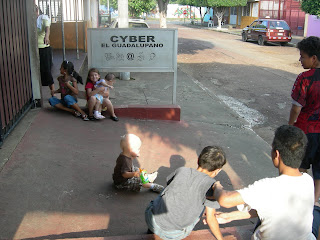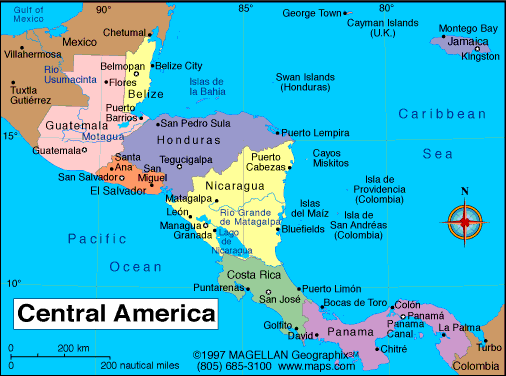I read a very thoughtful, well-written
article the other day by a Nicaraguan educator giving an overview of the politics of education in Nicaragua. Some issues she points out are universal: politicians implementing flashy, short-term fixes--especially as election time draws near--at the expense of necessary, long-term policy change. Some issues are unique to Nicaragua, such as the success of the 1980s literacy campaign in contrast to the extreme lack of qualified teachers today (in 2010 no new students registered for the teacher education program). Some struggles are common to many countries trying to crawl out of poverty, although, at least in Latin America, Nicaragua is at the very bottom of the heap in terms of instructional hours, budget, and academic performance. This picture shows the new "policies" of the ministry of education to improve education. Translation: "New MINED policies: More better education, More quality education, Educating everyone, Other education."

Three of the issues she mentions I see very clearly in my work and neighborhood: 1) lack of access to reading materials, 2) the difficulty of student retention, and 3) the shortage of instructional time.
1) Reading and writing can be difficult to teach even if one has received a quality education with ample access to books, creative problem solving strategies, and practice understanding and forming opinions about what is read. For teachers who have never had access to books or opportunities for critical analysis and writing, it becomes nearly impossible to teach these skills. Going to a local bookstore might give you an idea of the dilemma: yesterday I had the choice between a series of cheaply-made fairy tale books with mostly words and a few drawings of white people for $10 and a bright, colorful, interactive book about Diego´s adventures for $30. Very few people have even $10 to spend on a book (and why would they want to?), and any book inspiring interest is way out of reach of all but the wealthiest Nicaraguans. Libraries are few and far between.
2) Student retention is another problem I have witnessed in our neighborhood. If families move, if children get behind or have difficulty with behavior, if they have to drop out to work (among other reasons), children and/or parents will choose to sit out the rest of the year and begin again the next year. Many children finish primary school late, and those who have significant learning differences do not finish at all (one stat said that only 37% of Nicaraguan children are finishing 6th grade). When classes have 60 students, it is difficult for teachers to follow up on these cases. While children sit out, their brains are passing through critical developmental stages for absorbing "building block" learning concepts--those which are much more difficult to retain later.
3) Quick note about instructional time: Nicaraguan students do not even get 700 hours per year. General international standards are around 1000 hours per year. Recesses are long, breaks are frequent, and classes let out early.
OK, so now we´re all a little depressed. BUT Nicaraguans are working in their characteristically hopeful way to improve this situation! On Saturday I witnessed a group of 40 kids excitedly reading and engaged in creative group learning at the library of the the
Cultural Center in Batahola Norte, an MCC partner. I also have the privilege of working with a dynamic group of educators from Anabaptist churches who are forming a network of libraries to encourage kids to develop reading and critical thinking skills. We went together to visit another mobile library system, and witnessed kids and adults engaged in literacy.


I am hopeful when I think about the dynamic young Nicaraguans who are participating in exchanges. Consuelo (pictured below in the library at her former elementary school) will be working with students in an educational program in Bolivia, sharing and bringing home new ideas for improving education in her community. I was impressed with the way the librarian at this public school has worked to find local and international partnerships to bring books into their library. This room fills up each day with children coming to read and research.

One of MCC´s partner organizations, the
Christian School for the Deaf, works to provide quality academics to the Deaf of Nicaragua. I have seen creative, dynamic, committed Nicaraguan teachers each time I have visited.

As an educator myself, I am interested in all of these issues--both in my home and host cultures. There are always problems and areas for critique, but also signs of hope. (Beth)
.JPG)
.JPG)



























